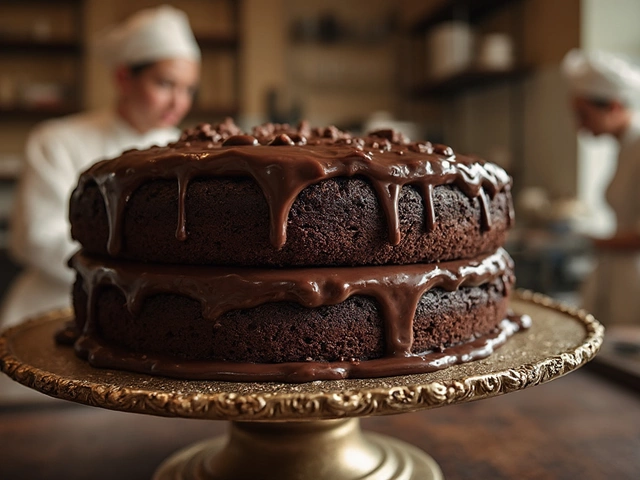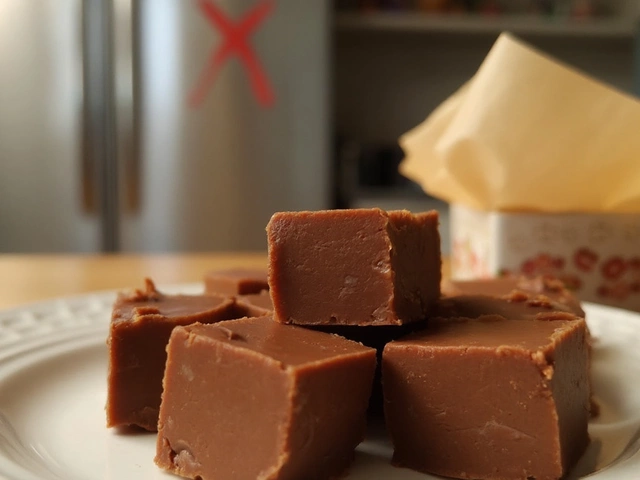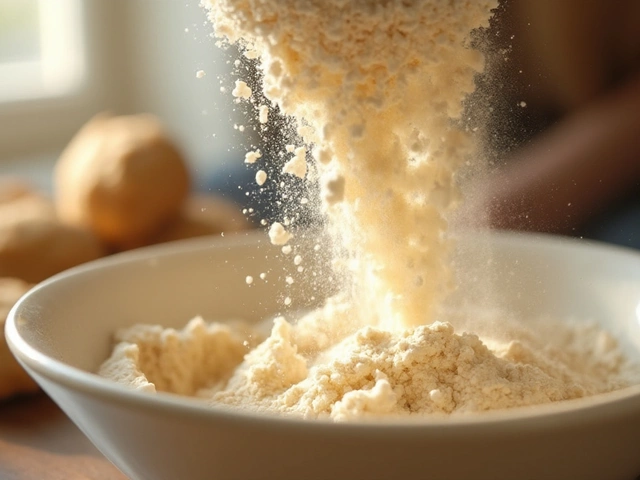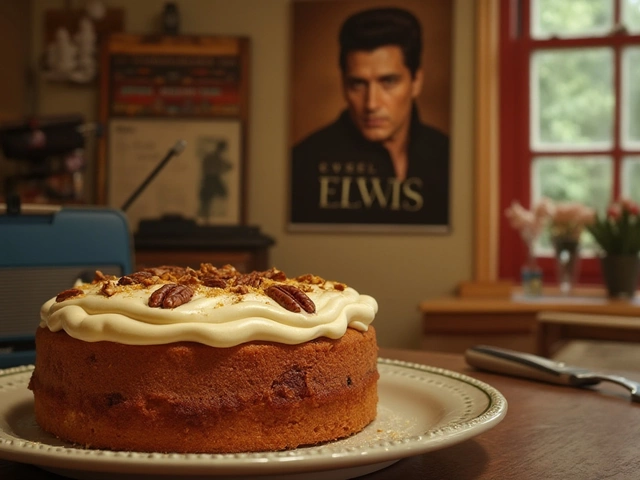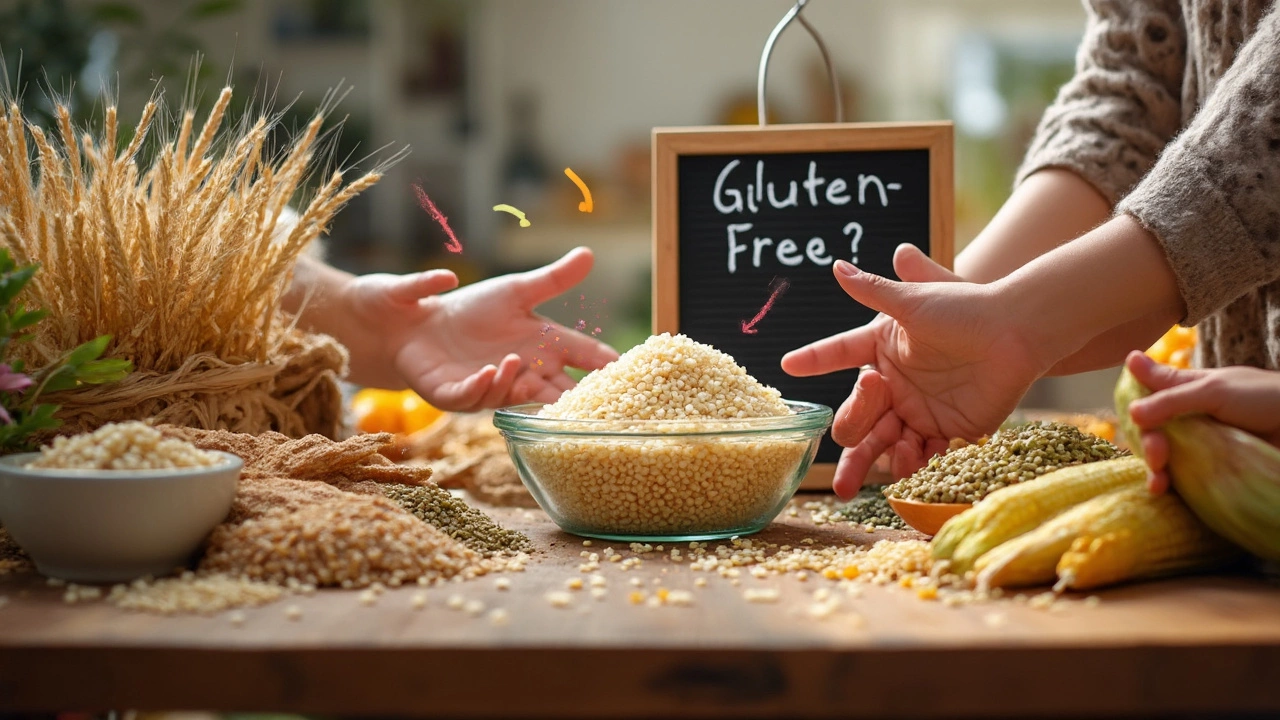
If you’re stocking up for some gluten-free baking or just trying to keep your meals safe, couscous can be a real curveball. It shows up in salads, side dishes, and even in unexpected spots like cake recipes. So what’s actually in couscous? It looks like a grain, but it’s not rice or quinoa. Here’s the deal—traditional couscous is made from durum wheat semolina. That means it’s loaded with gluten. Not just a trace or a smidge, but actual wheat flour squished into tiny balls. You’ll want to steer clear if gluten bothers you, even in small amounts.
This surprises a lot of people because couscous just doesn’t sound as ‘wheaty’ as pasta or bread. But trust me, it’s the same trouble for anyone with celiac or gluten intolerance. If you see couscous pop up in a cake mix or as a texture boost in baked goods, remember: it’s not gluten-free, even if it looks innocent on the plate. Always check those ingredient lists, especially on packaged cake mixes boasting ‘ancient grains’—sometimes couscous sneaks in, and that’s a dealbreaker.
- What Exactly Is Couscous?
- Is Couscous Gluten-Free?
- Spotting Couscous in Baked Goods
- Smart Alternatives for Gluten-Free Baking
- Quick Tips: Avoiding Hidden Gluten
What Exactly Is Couscous?
Here’s something surprising: couscous isn’t actually a grain, even though it looks and acts like one. It’s really tiny pasta balls. The classic version is made by sprinkling water over durum wheat semolina, then rolling the damp semolina into tiny pin-sized pellets. These are dried and sold as the couscous you see at the store. This entire process uses wheat, so traditional couscous gluten content is basically a given.
Sometimes people lump couscous in with gluten-free grains like rice or corn. Don’t fall for it—it sits squarely in the wheat family. In fact, it’s a staple food in places like Morocco, Algeria, Tunisia, and even makes its way into European and American recipes. Couscous cooks super fast, usually in five minutes or less, making it handy for salads and side dishes. That’s another reason you’ll find it in some speedy cake recipes: it soaks up flavors and gives texture in no time.
- Couscous gluten levels are the same as regular pasta—it’s nothing like quinoa or millet.
- There are a few varieties, including Moroccan (small), Israeli/pearl (bigger), and Lebanese (even larger), but all are wheat-based.
- You might spot “instant couscous”—this is precooked and then dried, so it cooks even faster, but it’s still full of gluten.
| Type | Main Ingredient | Gluten Content |
|---|---|---|
| Moroccan Couscous | Durum Wheat Semolina | High |
| Israeli (Pearl) Couscous | Wheat Flour | High |
| Lebanese (Moghrabieh) Couscous | Wheat Flour | High |
Honestly, couscous is everywhere, but if you’re hunting for gluten-free cake ingredients, it’s one to skip. If the package doesn’t scream “gluten-free” (and most couscous won’t), assume it has gluten. Always check twice, even in stores with huge specialty sections.
Is Couscous Gluten-Free?
This gets straight to the point—couscous gluten isn’t a myth, it’s a fact. Couscous is made from durum wheat, so it’s packed with gluten. If you can’t do gluten for health reasons, couscous is 100% off the table.
According to the Celiac Disease Foundation, “Couscous is essentially tiny pasta made from semolina wheat, so it contains gluten and isn’t safe for those with celiac disease or a gluten intolerance.”
Couscous is a wheat product and should be strictly avoided on a gluten-free diet. — Celiac Disease Foundation
We’re not talking cross-contamination or a trace here—couscous has as much gluten as regular pasta. Even a tiny serving can trigger a bad reaction if you’re sensitive. I’m hardcore about reading labels, but with couscous, it’s cut and dried: if it says “couscous,” it’s got gluten.
- If you’re baking or buying gluten-free cakes, avoid couscous entirely—no exceptions.
- Gluten-free diets require totally ditching anything made from wheat, rye, or barley, and couscous is wheat through and through.
Market research backs this up. In a 2023 consumer survey, nearly 80% of shoppers polled believed couscous was gluten-free—proof how common this mistake is. So if someone offers you a “gluten-free” cake and says, “Don’t worry, it’s just couscous,” don’t chance it.

Spotting Couscous in Baked Goods
You might not expect couscous gluten to show up in cakes, muffins, or cookies, but trust me, it happens way more than you’d think. Some bakers like to experiment with different grains for fun textures, and couscous sometimes gets tossed into recipes, especially in fancy bakeries or artisan shops. It’s even slipped into gluten-free-style cakes by mistake, just because it sounds exotic.
To keep couscous out of your gluten-free cakes, you really need to read ingredient lists closely. If you see words like “semolina,” “durum wheat,” or “wheat balls,” that’s your red flag. Couscous might also be labeled as “North African pasta pearls” or “instant grain mix” depending on the brand or store.
- If you’re shopping for cake mixes, don't just trust the gluten-free label—read the fine print for any wheat-based ingredients.
- Watch out for specialty baked goods, especially those labeled “Mediterranean,” “Moroccan,” or with a blend of ancient grains.
- When eating out, ask the staff directly if couscous or wheat semolina is used in desserts or cake recipes—it can be the difference between enjoying dessert and getting unintentionally glutened.
Here’s a quick table to show where couscous ingredients might sneak in:
| Label or Ingredient | What It Means |
|---|---|
| Semolina | Made from wheat—contains gluten |
| Durum wheat | Another word for wheat—contains gluten |
| Ancient grains blend | Sometimes includes couscous (check ingredients) |
| Pasta pearl | Could be couscous, which is not gluten-free |
Bottom line: Don’t let clever product names fool you. If you want a truly gluten-free diet, couscous in any form is out. Always double-check—your stomach will thank you.
Smart Alternatives for Gluten-Free Baking
When you’re looking to swap out couscous in a recipe—especially if you need to keep things truly gluten-free—there are some great options out there. Don’t worry, you’re not stuck with crumbly stuff or weird aftertastes! Lots of allergy-friendly bakers use these ingredients all the time, and most grocery stores carry them right on the shelf.
- Quinoa: It gets fluffy almost like couscous, but it’s totally free of gluten. It cooks fast and gives a gentle nutty flavor that works in both savory and sweet cakes.
- Millet: Not everyone’s tried this one, but it’s solid for texture in gluten-free cakes. It also holds moisture pretty well, which helps keep cakes soft.
- Buckwheat: Sounds scary, but it's actually not wheat at all. It’s safe and brings a rich, hearty flavor—plus it’s loaded with fiber.
- Rice flour: This is the classic. White or brown rice flour keeps the crumb light, which is perfect for gluten-free baking. Most gluten-free cake mixes use it as a base.
- Cornmeal or polenta: Adds a little crunch and a golden color. Just double-check the package to make sure there’s no cross-contamination with gluten grains.
Some people get tripped up by labels. If you’re looking for couscous alternatives, there’s a big difference between “wheat-free” and “gluten-free.” Always look for “certified gluten-free” and a clear ingredients list, because even a tiny bit of gluten can cause issues if you’re sensitive.
To make things easier, here’s a quick comparison of how popular gluten-free options stack up next to regular couscous for baking:
| Ingredient | Gluten-Free | Texture in Cakes | Flavor Profile |
|---|---|---|---|
| Couscous (wheat) | No | Light, pasta-like | Neutral |
| Quinoa | Yes | Fluffy, soft | Nutty |
| Millet | Yes | Moist, soft crumb | Mildly sweet |
| Buckwheat | Yes | Dense, hearty | Earthy |
| Rice Flour | Yes | Light, airy | Neutral |
If you’re experimenting, start with a mix that blends a few of these, since single flours sometimes bake up heavy. I always throw a little xanthan gum or psyllium husk into my batter for that classic cake bounce you’d expect from wheat flour. If you’re after a texture closest to couscous, quinoa is your best bet—just rinse it well before cooking so you don’t get any bitterness in your cake.

Quick Tips: Avoiding Hidden Gluten
It’s way too easy to get tripped up by hidden gluten in couscous and other spots, especially if you’re juggling a new diet or cooking for someone else. Here’s what I’ve learned—the hard way—about keeping gluten out of your kitchen and out of your gluten-free cakes.
- Double-check labels: Words like "semolina," "durum wheat," and, of course, "couscous" all scream gluten. Pre-packaged foods, cake mixes, or meal kits love to sneak these in, especially in processed foods with long ingredient lists.
- Don’t trust the bulk bin: Even if a label looks okay, those scoops wander from bin to bin, and cross-contamination is a real thing. Buy sealed products with clear gluten-free certifications when you can.
- Look for gluten-free alternatives: Instead of couscous, go for things like certified gluten-free quinoa, millet, or rice if you’re baking or cooking. They don’t just keep your food safe, they’re handy for swapping in cake recipes that call for couscous for texture.
- Restaurants can be risky: Couscous pops up in salads, veggie patties, and even desserts. Always ask about ingredients, and don’t be afraid to grill the waiter. I learned that some veggie burgers use couscous as a binder, and that’s the last place you want hidden gluten.
- Know your grains: Pearl couscous (also called Israeli couscous) is just as full of gluten as the regular stuff. “Ancient grains” blends can sometimes toss it in, so read carefully.
| Food | Gluten Risk | Safe Alternative |
|---|---|---|
| Couscous | Always contains gluten | Gluten-free quinoa |
| Orzo Pasta | Usually contains gluten | Rice-shaped gluten-free pasta |
| Bulgur | High gluten content | Millet, buckwheat |
| Rice | Gluten-free (plain) | Certified gluten-free rice |
Don’t let the small stuff slide. Even one ingredient can throw your whole gluten-free diet off. And yes, I’ve called Jonas from the store, panicking about a label, more than once. No shame in being careful. If a package doesn’t say "gluten-free," skip it or find something else. Your gut will thank you.

